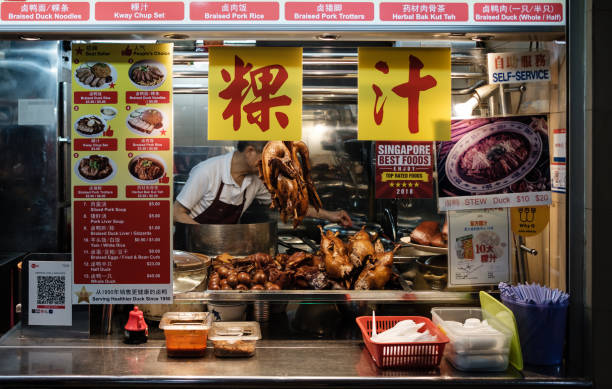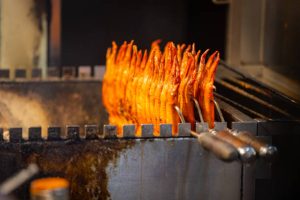Where Food and Culture Meet
When you search for unique places in singapore, you already know it is not a matter of hunting popular attractions. The real essence of the city is disclosed on a plate. The food is not only stomach food; it is the story of movement, exchange and history that goes across generations. It is history in each bite and a piece of culture in the form of pastry in every stall, cafe or street corner.
Hawker Centres: The Pumping Heart of our Lifestyle
A visit to any hawker centre is enough to play your eardrums with the sound of woks even before the aroma sneaks in.
Melting Pot of culture
In other places, who would dare mix the Indian curry puff, Chinese char kway teow, and Malay nasi lemak in a few steps’ distance? Such stalls are not simply kitchens but rather cultural archives. Cooking secrets are treated as heirlooms; they are proudly handed down between generations.
Everyday Gatherings
Families, laborers, schoolchildren–all lean anthropoid elbow-to-elbow at plastic tables. It is democratic eating. None of the trimmings. Affordable plates that have the spirit of the city.
Heritage Shophouse Eateries
Amble in silent lanes, and you will see century-old shophouses converted to little eateries now.
Time-Tested Recipes
The kitchens brim with fusion food on the inside. Here is a reinterpretation of noodles with chili paste that grandmothers used to make and that now includes the elements of the present day.
A Feast of the Eyes
History is present in the buildings themselves. Worn wooden shutters and cracked paint, old wooden windows, add to the experience. Eat, feel a bit like going to dinner and a bit like entering a cultural final fantasy.
Water Markets As Food Theatres
It is not all about raw produce in markets. They tend to conceal stalls where cultures and food fuse in the most real manner.
On Display At Freshness
Fish that still twigless, vegetables piled up and the smells of herbs. Vendors, right next door, stirred up meals using ingredients that relocated between stall and wok in a few seconds.
Human Connection
Witty repartee with retailers is the panache to the visit. Small and fast smiles or a witty comment or a cooking tip left as an afterthought–it is all about people as much as it is about food.
Rooftop Food Spots That Have a Story
Clandestine restaurants lurk on some of the rooftops in the city, representing a different world compared to the refined dining towers.
Looks with Favour
Imagine claypot meals bubbling in the cooking in the open air. The contrast between simple and cheap food and the elevated lines of buildings makes a strange harmony. And here tradition does not die–it exists on top of racket.
The Laughing Air
The crowds are smaller, but the discussions last longer. So when total strangers sit together at a table and bite one another and part as friends, it is not surprising.
Back-Alley Kitchens Locals Protect
There are kitchens hidden in dark alleys, and they survive without signboards or slick branding.
Food First Everything Second
Stools are of plastic material and tend to wobble, and menus are written on boards, but the food eliminates all inconveniences. Rich bowls of laksa, char-grilled satay skewers or noodles tossed in fried batter, steeped in delicate, evasive wok Hei–the fragrance of the wok.
You Can Not Distill Atmosphere
Low light, frying pans, cats jumping under the chairs. The flaws contribute to the beauty. It is unrefined, crude and very, very real.
Bakeries Hung on to Old School Magic
As glossy patisseries spring up all over the city, several modest bakeries survive.
Memories That Foods Carry
Consider kaya buns enveloped in brown paper or sponge cakes that fold into the hands. These are not their syrup-tinted, photo-worthy desserts; these are their cravings.
A Stand Fast People
Queues are built up. Other customers have been visiting the shop since about 50 years ago, proving that nostalgia tastes better than a mix of butter and sugar.
Childhood Food With Ancestral Origins
Farther afield of the tourist drag, other communities dish up meals based on their descent.
Peranakan Plates
Bright kueh desserts such as Ayam Buah Keluak are popular. They are not ready-made recipes–one must have patience and also be respectful of the culture. All this food is history in disguise as a comfort food.
Eurasian Influence
Sugie cake, curry debal or spicy stews provide information on migration routes. These dishes tell of the families that preserved the traditions in spite of the fast rhythm of the city.
Surprising Pop-Up Food Events
In Singapore food does not stand still. Pop-ups leave the audience in speculation.
A Fugitive Feast
Satay only one week, ramen next week in the car park. They are so fast, so brief–you don’t get it? It is fun to hunt, and the transitory nature makes each dish more memorable.
Discovery Energy
It has a festival atmosphere. There is laughter and rattling of the mugs and music and the aroma of fried dough or smoked meat. It is not like eating and seems more like an act of celebration.
Midnight Eateries That Never Sleep
In Singapore there is a scene for late-night hunger.
Supper Staples
Prata was fried on hot pans, mee goreng was thrown in hot chili, and pulled kopi was pulled in a high cup. The food is more delicious when eaten with weary friends or fellow night owls.
A Tacit Understanding
Dinner places are strange communities. All taxi drivers, students, and shift workers would jostle each other at 2 in the morning in their relationship with the universal panacea–hot food at strange times.
The Reasons The Locations are Important
You will find renowned restaurants, but the taste of real Singapore resides in the unsuspected places. The beauty of heredity can be found more at a hawker stall, a market stall or a back alley kitchen than at a smoothly refined dining hall. The food and the culture cannot be separated here, as seen in these underground and cherished locations. Tasting and understanding are the same thing, and to taste and connect to a story outside of yourself.









